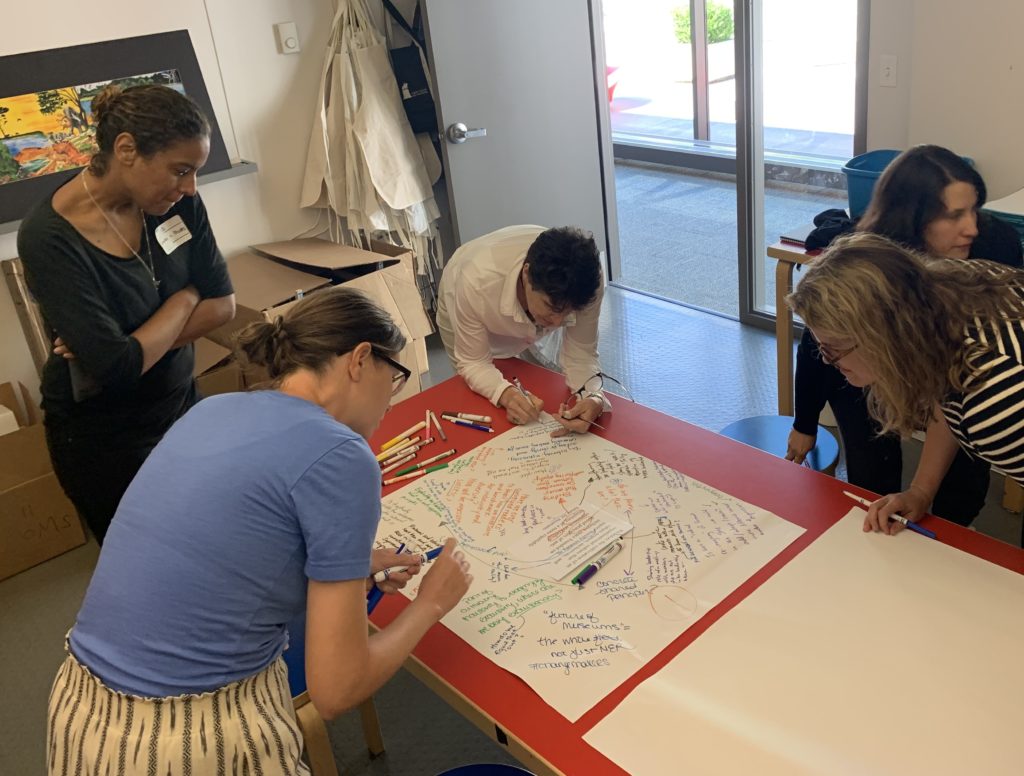Year-End Update from the MER President
Welcoming Change in 2020
January 1, 2020 means another year, and a new decade, but for me the year always starts in September. Museum education encourages me to live by the seasons. Whether it’s the launch of the academic year, school break camps, program series, galas/fundraisers, or the fiscal year-end, our work lives contain distinct seasons, each requiring different mental states, from dreaming and planning to “go time!!!”, to reflection and iteration and back again (and not necessarily in that order). And these seasons turn with the larger backdrop of our sites, our communities, and our regions. This year in the U.S., there will be the presidential election, and the anniversary of the passage of the 19th amendment. The 19th amendment guaranteed and protected suffrage for women in the constitution, but did not practically enfranchise all women, especially black and indigenous women, in the US. Public humanities and museum projects that amplify undertold narratives about suffrage, citizenship, elections, and human rights, will be one way that museum educators engage in vital public discourse about politically charged topics.
Across the globe, many museum workers have been actively engaged in movements to change how museums function in our communities – from fair wages in the workplace, to the ethics we expect from funders, to the relationship of colonial museum collections to indigenous communities. Amidst these many opportunities for museums to be engaged in cultural and political discourse, how do we show up ready for change, as practitioners, and as sites in our communities?
As always, I look to the JME for case studies, ideas, and inspiration. Throughout 2019, JME authors investigated a variety of practices in our field that responded to or advocated for change in our field. Marianna Pegno charts how the Tucson Museum of Art’s Network Connections program requires it to embrace a new role as service provider, and to develop deep partnerships with social services colleagues across the city (“Becoming a Service Provider through Partnerships and Sustained Engagement: Developing Programs with Immigrant and Refugee Audiences in Art Museums,” JME 44.1).
Helena Vidal, Lisa Hockstein, Joy Ahearn, and Karen Stein show how the CALTA21 program at the Katonah Art Museum brings together museum educators, immigrant ESOL students, and language instructors to cultivate meaningful adult learning for instructors and participants alike (“Learning Communities Finding Common Ground for the Common Good,” JME 44.1).
In “Don’t Lose the Connection: Virtual Visits for Older Adults,” (JME 44.3), Dale Hilton, Arielle Levine, and Janet Zanetis document virtual visits that connect older adults with the museum even when they are unable to visit. Suzanne Ackerman describes the power to change hearts and minds when zoos adapt empathy-building techniques from history museums as a fresh alternative to “gloom and doom” messaging about extinction (“Best Practices for Building Empathy Through Live Animal Encounters,” JME 44.3).
Elliot Kai-Kee connects two moments of experimentation in gallery activities that emerged from educator fatigue of talk-driven pedagogies in the 1970s with the rise of feeling-based activities and contemporary museum mash-ups. Noting the gestalt and creativity in both eras, he cautions that these turns require a rigorous definition of learning objectives and aligned pedagogies if they are to become lasting shifts in our practice (“Gallery Games and Mash-ups: The Lessons of History for Activity-based Teaching,” JME 44.4).
In the issue devoted to professional development, many practitioners described a reorientation of how we see ourselves in relation to our constituents. One that really shined a light on the deep well of talent and expertise among the members of a museum education department was Maeve Montalvo’s about the Museum of the City of New York. In her article, Montalvo presents a powerful case for the multi-directional learning to be gained when scholars come to the museum not only as experts in their field of research, but also as learners in search of the pedagogical and public humanities know-how that museum education departments offer (“The Museum Education Department as Training Ground for Scholar-Educators,” JME 44.2).
The MER board members are asking ourselves similar questions, internally, as we complete the fifth and final year of a strategic plan, developed by our forward thinking predecessors from the 2015 board. As we lay the groundwork for this season of planning and change, and building on work to better align our practices with our stated equity and inclusion values, we’re looking methodically at several aspects of our organization, from board recruitment and culture, to the opportunities to remove barriers to making the JME more accessible to more audiences. One of the actions steps we’re excited to take in the coming year is embedding alt text into JME online articles to make the content fully accessible to screen readers, starting with issue 45.1 in spring 2020. Stay tuned for more to come.

The articles listed above are just a few of the gems I’ve taken note of from the JME in 2019, and are only a sampling of the good work you are collectively doing to make your museums meaningful sites for generative change. We want to hear from you! Consider taking some time this year to share your practice with the field by writing for the JME.
Happy New Year! From all of us at MER, wishing you many good and new things in the coming year and decade.
Emily Potter-Ndiaye is the Dwight and Kirsten Poler and Andrew W. Mellon Head of Education and Curator of Academic Programs at the Mead Art Museum at Amherst College. She serves as the President of the Museum Education Roundtable Board of Directors.

